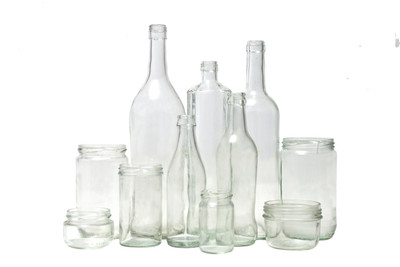How is glass made?
Posted by The Wares Team on 11th May 2021
At Wares of Knutsford, we absolutely love glass and we know our customers do too. After all, glass jars and glass bottles are beautiful to look at, durable, easy to recycle and they are natural too, not to mention extremely flexible.
Glass has been around for hundreds of years, certainly long before plastic alternatives (which are often fairly damaging for the environment). So let's take a look at how this wonder material is made and learn a little more about the origins of our beautiful and beloved glass!
But firstly...
Do you remember the question 'is glass a liquid or a solid' at school? It's a fascinating one because glass has an air of mysticism about it, because of its unusual physical and chemical behaviour In fact, although it behaves and appears like a solid, it's actually a very slow-moving form of liquid. This is because it's manufactured from liquid sand and it never stops moving on a particular level. If you've ever looked at ancient glass, such as that found in a medieval stained glass window, you can sometimes see where the glass has begun to physically shift and move over time.
How is glass made?
This strange material is extremely strong, but when it shatters it will explode into thousands of shards. It's transparent and yet made from opaque sand! In fact, it's manufactured from liquid sand - just the ordinary kind - which is heated to around 1700 degrees Celcius. The sand is made mainly from silicon dioxide and it eventually melts and takes on a liquid state.
As the sand takes on this molten state, it is then allowed to cool, at which point it has transformed through a chemical process and has a new internal structure. This means that it becomes a 'frozen liquid or amorphous solid. It has crystalline structures that are associated with solids along with molecular randomness which is associated with liquids.
When glass is being made industrially, it is then mixed with glass pieces that have usually been gathered in recycling processes. Limestone and soda ash are also both added and the mix is heated together in a furnace. The soda ash is only added to reduce the melting point in the sand so that less energy is needed for the end-to-end process.
However, this means that the resulting material would melt in water... so limestone is added as a controlling factor to prevent this from happening. The resulting end process has the technical name of soda-lime-silica-glass, and it's basically the general product that we see in glass bottles, glass jars and every other glass material around us.
Tinted products
Of course, glass is very often coloured. This is achieved by adding other chemicals which change the appearance of the finished product. For example, to make a green tint, iron or chromium-based chemicals are added to the molten mixture. For blue finishes, a cobalt salt might be added. Glass artists will work with different pigments to make glass into patterns - and they will also blow the molten glass to make beautiful shapes. In factories, moulds are used to create mass-produced glass products in large volumes.
Toughened and specialist products
For one-proof glass, manufacturers add boron oxide. For fine crystal glasses, lead oxide is added to make the fine cutting process easier. There are also very specialised forms of glass such as tempered and bullet-proof variants and these are made with a very different manufacturing process that sandwiches together different layers of plastic and glass. Tempered glass is used in cars and usually involves cooling the molten glass extremely fast so that it ends up much harder.
Uses for glass
You'll find glass everywhere you look in the modern world. From the glass bottles and glass jars we use in the kitchen to sandpaper, strain gauges used to assess if buildings are moving and even boat hulls which are made from fibreglass - it's everywhere! Glass is inexpensive to manufacture (in most instances!), clear, unreactive, strong, clean and incredibly useful. It is also extremely easy to recycle and can be recycled almost infinitely, making a good choice for green materials, and a great alternative to plastics.
Look after it and it can even last for a lifetime! What more could you want from one of nature's most incredible chemical processes?
Find the perfect glass products
If you're feeling inspired by the story of glass, don't forget to check out our huge range of glass bottles and glass jars here at Wares of Knutsford! We sell glass storage, glass decoration and all things glass in a wide variety of sizes, colours and styles. And we are constantly updating our ranges with new offerings, from mini sizes for wedding favours through to bulk buy pallets for lower unit costs.

